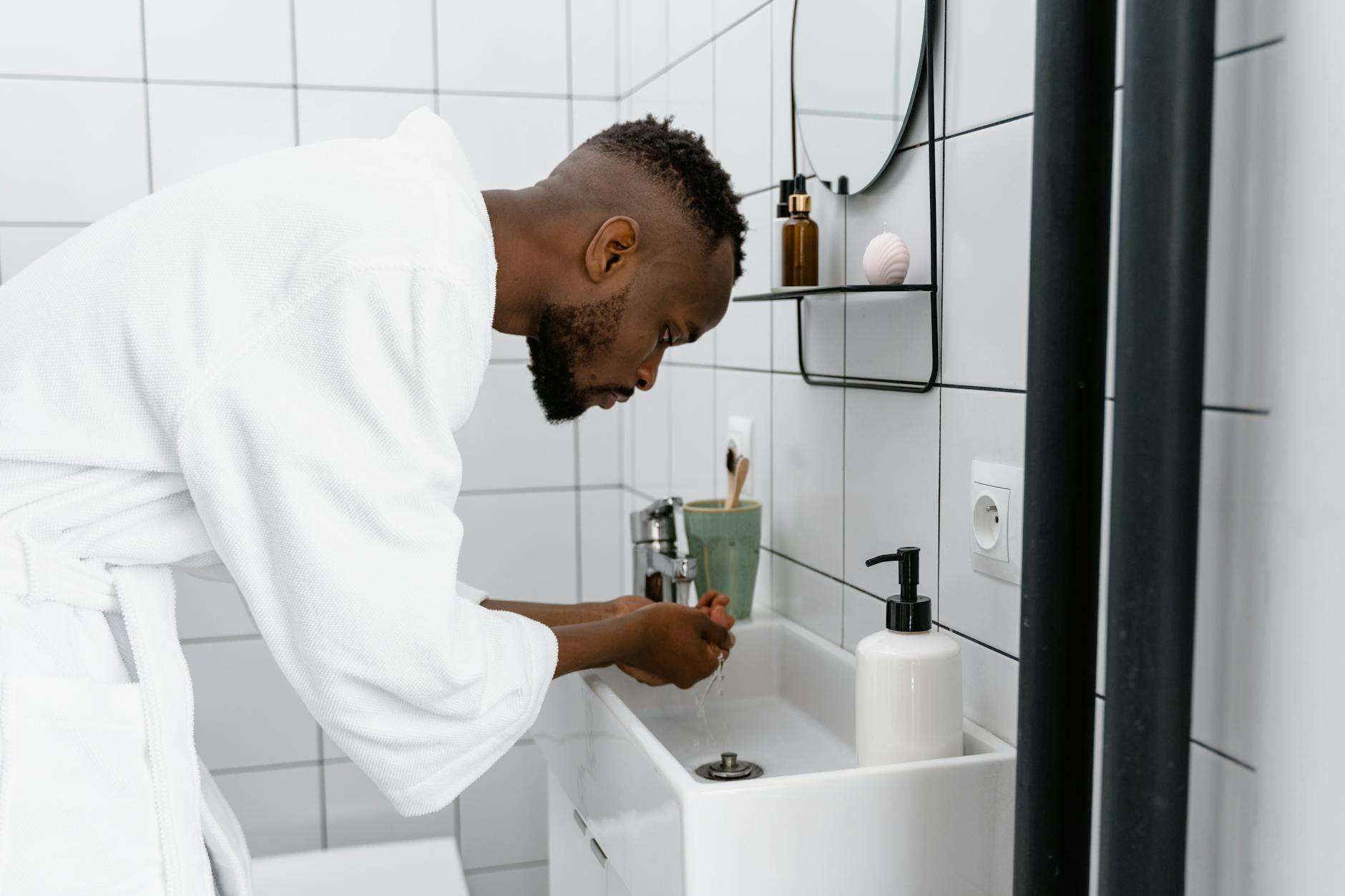
How to Live a Happy Life: 🌟 Have you ever wondered why some people seem to radiate happiness effortlessly while others struggle to find joy in their daily lives? In today’s fast-paced world, where stress and anxiety have become unwelcome companions, the pursuit of happiness often feels like chasing a mirage. But here’s the truth: happiness isn’t just a stroke of luck – it’s a skill that can be cultivated and mastered.
The good news? You don’t need to make dramatic life changes or wait for perfect circumstances to start living a happier life. Through years of research and real-world applications, we’ve discovered that true happiness stems from simple, actionable habits that anyone can implement. From morning routines that set the tone for your entire day to mindset shifts that transform how you view challenges, these proven strategies can help you create a life filled with more joy, purpose, and satisfaction.
Let’s explore 10 powerful techniques that will help you build a foundation for lasting happiness, starting with how to create positive morning habits that energize your day… 💫

Start Your Day with Positive Habits
Create a Morning Gratitude Ritual
Begin each day by acknowledging three things you’re thankful for. This simple practice shifts your mindset towards positivity and sets a optimistic tone for the day ahead.
Exercise for Natural Endorphins
A 15-20 minute morning workout releases endorphins, your body’s natural mood elevators. Choose from these effective morning exercises:
- Light jogging or brisk walking
- Yoga stretches
- Jump rope
- Basic bodyweight exercises
- Quick HIIT routine
Eat a Nutritious Breakfast
Fuel your body with foods that promote happiness and sustained energy:
| Food Category | Examples | Mood-Boosting Benefits |
|---|---|---|
| Whole Grains | Oatmeal, quinoa | Steady energy release |
| Proteins | Eggs, Greek yogurt | Mental clarity |
| Fruits | Bananas, berries | Natural sweetness boost |
| Healthy Fats | Avocado, nuts | Brain function support |
Practice Mindful Meditation
Dedicate 5-10 minutes to quiet meditation. Focus on your breath and set positive intentions for the day. This practice reduces anxiety and increases mental clarity.
Now that you’ve established a strong morning foundation, let’s explore how nurturing meaningful relationships can further enhance your daily happiness.

Nurture Meaningful Relationships
Spend Quality Time with Family
Making time for family isn’t just about being present – it’s about creating meaningful connections. Schedule regular family dinners, plan weekend activities, or establish traditions like game nights. Even 15 minutes of undivided attention can strengthen family bonds significantly.
Maintain Close Friendships
True friendship requires consistent effort and genuine interest. Here’s how to nurture these vital relationships:
- Schedule regular catch-ups, whether virtual or in-person
- Remember important dates and milestones
- Be present during conversations
- Offer support during both good and challenging times
Build a Supportive Social Network
Expanding your social circle creates a robust support system that contributes to long-term happiness. Consider these opportunities:
| Activity | Benefits | Connection Type |
|---|---|---|
| Join clubs | Shared interests | Like-minded individuals |
| Volunteer | Community impact | Purpose-driven connections |
| Professional groups | Career growth | Mentorship opportunities |
Research shows that people with strong social connections live longer, happier lives. Make it a priority to invest time in these relationships daily, whether through a quick message, phone call, or in-person meeting. Remember to balance digital and face-to-face interactions for more meaningful connections.
Now that we understand the importance of relationships in creating happiness, let’s explore how our mindset plays a crucial role in maintaining these connections and overall life satisfaction.

Master Your Mindset
Challenge Negative Thoughts
Transform your thought patterns by implementing the STOP technique:
- Stop negative thoughts as they arise
- Take a deep breath
- Observe your surroundings
- Proceed with positive alternatives
Practice Self-Compassion
Treat yourself with the same kindness you’d offer a friend. Use the self-compassion framework:
| Component | Practice | Benefit |
|---|---|---|
| Mindfulness | Acknowledge feelings without judgment | Emotional awareness |
| Common humanity | Recognize shared experiences | Reduced isolation |
| Self-kindness | Use gentle self-talk | Increased resilience |
Focus on Solutions, Not Problems
Transform challenges into opportunities by:
- Breaking down complex issues into manageable steps
- Identifying actionable solutions
- Celebrating small progress
- Learning from setbacks
Embrace Personal Growth
Adopt a growth mindset by viewing challenges as opportunities to learn and improve. Set SMART goals:
- Specific
- Measurable
- Achievable
- Relevant
- Time-bound
Cultivate Optimism
Build realistic optimism through:
- Identifying daily positive moments
- Reframing negative situations
- Visualizing successful outcomes
- Creating positive affirmations
Now that you’ve learned to master your mindset, let’s explore how physical well-being contributes to your overall happiness.

Take Care of Your Physical Well-being
Physical well-being forms the foundation of a happy life, as your body and mind are intrinsically connected.
Maintain consistent sleep schedule
- Set fixed bedtime and wake-up times
- Aim for 7-8 hours of quality sleep
- Create a relaxing bedtime routine
- Avoid screens 1 hour before bed
Stay hydrated
- Drink 8-10 glasses of water daily
- Monitor urine color (pale yellow indicates good hydration)
- Set hydration reminders
- Carry a reusable water bottle
Exercise regularly
Regular physical activity boosts mood and energy levels through:
- Endorphin release
- Improved sleep quality
- Better stress management
- Enhanced self-esteem
| Exercise Type | Benefits | Recommended Frequency |
|---|---|---|
| Cardiovascular | Heart health, mood boost | 150 mins/week |
| Strength Training | Muscle tone, metabolism | 2-3 times/week |
| Flexibility | Stress relief, mobility | Daily |
| Walking | Low impact, accessible | 30 mins/day |
These physical wellness habits create a positive cycle: better sleep leads to more energy for exercise, which in turn improves sleep quality. Proper hydration supports both exercise performance and recovery. When your body feels good, your mind follows suit.
Now that you’ve established these physical wellness habits, let’s explore how to find purpose in your daily activities to further enhance your happiness.

Find Purpose in Daily Activities
Set Meaningful Goals
- Create SMART goals aligned with your values
- Break down large objectives into manageable tasks
- Track progress and celebrate small wins
Setting meaningful goals transforms ordinary activities into purposeful pursuits. Whether it’s learning a new skill or improving your community, having clear objectives gives your daily routine deeper meaning.
| Goal Type | Example | Impact on Happiness |
|---|---|---|
| Personal | Learn a new language | Boosts confidence |
| Professional | Develop leadership skills | Career satisfaction |
| Community | Volunteer monthly | Social connection |
Pursue Passionate Hobbies
Finding activities that spark joy and engagement is crucial for a fulfilling life. Dedicate time to hobbies that:
- Challenge your creativity
- Provide a sense of accomplishment
- Connect you with like-minded individuals
- Offer stress relief and enjoyment
Help Others Regularly
Contributing to others’ well-being creates a profound sense of purpose. Consider these impactful ways to help:
- Mentor someone in your field
- Volunteer at local organizations
- Support friends and family
- Share your skills with your community
When we engage in purposeful activities, we experience increased satisfaction and meaning in life. By combining meaningful goals, passionate pursuits, and regular acts of service, everyday moments become opportunities for joy and fulfillment. This sense of purpose naturally leads to better stress management, which we’ll explore next.

Practice Stress Management
Managing stress is essential for maintaining a happy life. By implementing effective stress management techniques, you can create a more balanced and joyful daily experience.
Learn Breathing Techniques
Deep breathing exercises can instantly calm your nervous system and reduce stress levels. Try these proven techniques:
- 4-7-8 Breathing: Inhale for 4 counts, hold for 7, exhale for 8
- Box Breathing: Equal counts of 4 for inhale, hold, exhale, and pause
- Alternate Nostril Breathing: Alternating breath between nostrils
Set Healthy Boundaries
Creating and maintaining boundaries is crucial for stress management:
| Area | Boundary Example | Benefit |
|---|---|---|
| Work | Set specific work hours | Prevents burnout |
| Personal | Learn to say “no” | Preserves energy |
| Digital | Limit social media | Reduces anxiety |
Take Regular Breaks
Schedule intentional breaks throughout your day:
- 5-minute meditation sessions
- Short walks between tasks
- Screen-free lunch breaks
- Power naps (10-20 minutes)
Connect with Nature
Spending time outdoors has proven stress-reducing benefits:
- Take daily nature walks
- Create an outdoor sitting area
- Maintain a small garden
- Practice outdoor meditation
When we effectively manage our stress, we create space for more joy and positivity in our lives. Now, let’s explore how creating a positive environment can further enhance your daily happiness.

Create a Positive Environment
Declutter Living Space
A cluttered space leads to a cluttered mind. Start by implementing the 15-minute daily decluttering rule:
- Clear surfaces of unnecessary items
- Sort items into keep, donate, and discard piles
- Organize remaining items in designated spaces
- Maintain a minimalist approach to new purchases
Surround Yourself with Uplifting People
Your social environment significantly impacts your happiness. Here’s how to cultivate positive relationships:
| Type of People | Impact on Happiness | Action Steps |
|---|---|---|
| Positive Influencers | Boost mood and motivation | Spend more time with them |
| Energy Vampires | Drain emotional resources | Limit interactions |
| Toxic Relationships | Negatively impact well-being | Set boundaries or distance |
Limit Negative Media Exposure
Control your digital environment to protect your mental well-being:
- Set specific times for news consumption
- Curate social media feeds to show inspiring content
- Follow accounts that align with your personal growth goals
- Install apps that track and limit screen time
Research shows that people who maintain organized spaces and surround themselves with positive influences report 40% higher satisfaction levels in daily life. By creating an environment that supports your well-being, you’re laying a strong foundation for sustained happiness.
Now that your environment is optimized for positivity, let’s explore how to develop financial peace, another crucial element of a happy life.

Develop Financial Peace
Financial stress can significantly impact your happiness, but achieving financial peace is possible through purposeful planning and mindful spending habits.
Create a Realistic Budget
A well-structured budget serves as your financial roadmap. Here’s a simple breakdown of essential budget categories:
| Category | Recommended Percentage |
|---|---|
| Housing | 25-35% |
| Utilities | 5-10% |
| Food | 10-15% |
| Transportation | 10-15% |
| Savings | 20% |
| Discretionary | 15-30% |
Build Emergency Savings
Start building your financial security by:
- Setting aside 3-6 months of living expenses
- Automating monthly transfers to savings
- Keeping emergency funds in an easily accessible account
- Avoiding touching these funds for non-emergencies
Live Within Means
Master the art of conscious spending by:
- Distinguishing between needs and wants
- Waiting 24 hours before making non-essential purchases
- Using cash for discretionary spending
- Finding free or low-cost alternatives for entertainment
- Avoiding lifestyle inflation when income increases
Financial peace comes from having a clear plan and sticking to it. Money management doesn’t have to be complicated – it’s about making conscious choices and developing sustainable habits. With your finances under control, you can focus on personal growth and continuous self-improvement.

Embrace Personal Growth
Learn Something New Daily
Personal growth and happiness are deeply interconnected. Start by dedicating 15-30 minutes each day to learning:
- Read industry publications or books
- Take online courses or watch educational videos
- Learn a new language through apps
- Practice a musical instrument
- Study a new skill relevant to your career
Step Out of Comfort Zone
Growth happens when we challenge ourselves. Here’s a progressive approach to expanding your boundaries:
| Week | Challenge Level | Activity Examples |
|---|---|---|
| 1 | Mild | Speak up in meetings |
| 2 | Moderate | Try a new hobby |
| 3 | Bold | Give a presentation |
| 4 | Adventurous | Lead a project |
Celebrate Small Wins
Acknowledging progress reinforces positive behavior and boosts happiness. Track your achievements through:
- Keep a progress journal
- Share accomplishments with friends
- Reward yourself for meeting goals
- Take photos of your journey
- Document lessons learned
Remember that personal growth isn’t about dramatic transformations but consistent small steps forward. Regular learning, gentle pushing of boundaries, and celebration of progress create a positive feedback loop that enhances life satisfaction.
Now that you’ve learned about personal development, let’s explore how practicing daily gratitude can further elevate your happiness levels.

Practice Daily Gratitude
Keep a Gratitude Journal
Start each day by writing down 3-5 things you’re thankful for. This simple practice rewires your brain to focus on positivity rather than negativity. Use this format to organize your daily entries:
| Time of Day | What to Record | Example |
|---|---|---|
| Morning | Something you anticipate | Upcoming lunch with friend |
| Afternoon | A positive interaction | Kind gesture from colleague |
| Evening | Day’s highlights | Peaceful sunset walk |
Express Appreciation to Others
- Send one thoughtful message daily to someone you appreciate
- Give specific compliments rather than generic praise
- Write thank-you notes for acts of kindness
- Verbally acknowledge others’ contributions
Focus on Present Moments
Transform ordinary moments into opportunities for gratitude by practicing mindful awareness. Notice small pleasures like:
- The warmth of morning sunlight
- The taste of your favorite beverage
- The sound of children laughing
- The comfort of your bed
Acknowledge Daily Blessings
Create a habit of recognizing life’s basic gifts that we often take for granted:
- Access to clean water
- Having food on the table
- Good health
- Safe shelter
- Ability to learn and grow
Now that you’ve learned how to cultivate gratitude, let’s explore how this mindset can contribute to your personal growth journey.

Living a happy life isn’t a destination but a daily choice we make through small, intentional actions. By incorporating these ten proven strategies – from morning routines and positive relationships to mindset management and physical wellness – you can create a foundation for lasting happiness and fulfillment.
Remember that happiness is deeply personal and what works for others may need adjustment for your life. Start by implementing one or two tips that resonate most with you, then gradually add more as they become natural habits. Your journey to a happier life begins with a single step – take that step today and witness how these simple changes can transform your daily experience.
How to Live a Happy Life FAQ:
- What are some daily habits to boost happiness?
- Small habits like practicing gratitude, staying physically active, connecting with loved ones, and setting achievable goals can help boost happiness. Consistency in these habits often brings long-term positive effects on mental well-being.
- How can I stay happy during difficult times?
- Facing tough times is challenging, but focusing on self-care, seeking support from friends or family, and practicing mindfulness can help. Remember that tough times are temporary, and building resilience can make it easier to find happiness even during hardships.
- Does achieving happiness mean I will never feel sad?
- No, happiness doesn’t mean avoiding sadness. It’s normal to feel a range of emotions. True happiness is about having a positive outlook and coping skills, allowing you to handle life’s ups and downs with resilience.


